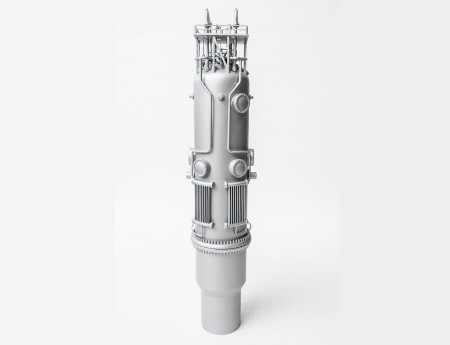The nuclear energy industry has had a target on its back going back to the Three-Mile Island accident in 1979, the subsequent Chernobyl disaster in 1986, and the piece de resistance, the calamity at Fukushima in 2011. Talk about three industry black eyes that make environmentalists shudder. But is this a mistake?
In transitioning away from fossil fuel dependency, the energy industry has embraced decommissioning coal-fired power plants, using natural gas-powered alternatives, investing in solar and wind farms, and dabbling with geothermal, tidal and wave energy.
The impression environmentalists have is that nuclear power is high cost, a regulatory nightmare, burdened by decade-long timelines, and saddled with radioactive waste. And that seems to be pretty true for nuclear energy facilities built to date.
But there is a different nuclear energy picture emerging that environmentalists should consider in pursuit of our global goal to end dependency on fossil fuel-based power generation to fight global warming.
Two nuclear technology streams are emerging: one for fission reactors, the other based on progress with fusion. In this posting, we look at the former.
Microreactors Answer Many Needs
At the US Department of Energy’s Argonne National Laboratory, fission microreactors with variable capacity are being developed for commercial use varying in size from a few kilowatts to 20 megawatts. These small output reactors are modular for use individually or conjoined where more energy capacity is needed. A single module could replace diesel-power generators in Arctic communities where renewable energy alternatives like solar and wind would be problematic. Solar panels in the extreme north would suffer from dramatic changes in efficiency as communities deal with annual cycles of 24-hour daylight to darkness.
What kind of fuel will these fission-based microreactors use? Not the graphite encasing uranium or plutonium fuel rods that we find in nuclear power plants today, but rather multilayered metal hydrides using low-enriched uranium, in various configurations from balls to blocks. Each microreactor module would be designed to provide power for a decade or more before being swapped out with an easily transportable replacement.
Instead of requiring complex cooling systems with pumps, these fission microreactors will employ passive heat transfer mechanisms using materials such as silicon carbide compounds and liquid metal.
Considering safety, the microreactors will be self-contained, designed to generate energy until fuel levels run low. They will then be switched off when a replacement arrives. It would be akin to swapping out batteries.
And as for the nuclear waste issue, the spent modules will be returned to the manufacturer for recycling or refurbishment.
Novel uses for microreactors include:
- deploying them at sites along highways to be the energy source for recharging electric vehicles.
- distributed off the grid energy generation to industrial plants or apartment clusters.
- in Deep Space, or a planet or moon, where solar panels no longer can harvest enough energy from a distant Sun.
In 2020, the US Nuclear Regulatory Commission certified the first modular nuclear microreactor (see image at the top of this posting). The company, NuScale, hasn’t yet scaled down its reactor to kilowatt size. Nor have they abandoned fuel rods with embedded uranium. The approved model generates 50-megawatts, stands 23 meters (76 feet) tall, and 5 meters (15 feet) wide and uses a heat exchanger to externally produce steam to power a turbine.
I envisage a future where unconventional microreactors will quickly enter the field now that this first model has passed muster.
Next: Part 2 with a look at the state of fusion reactors.

















[…] SMRs being considered would be classified as microreactors with very small footprints and much of the construction being done offsite. Microreactors are seen […]